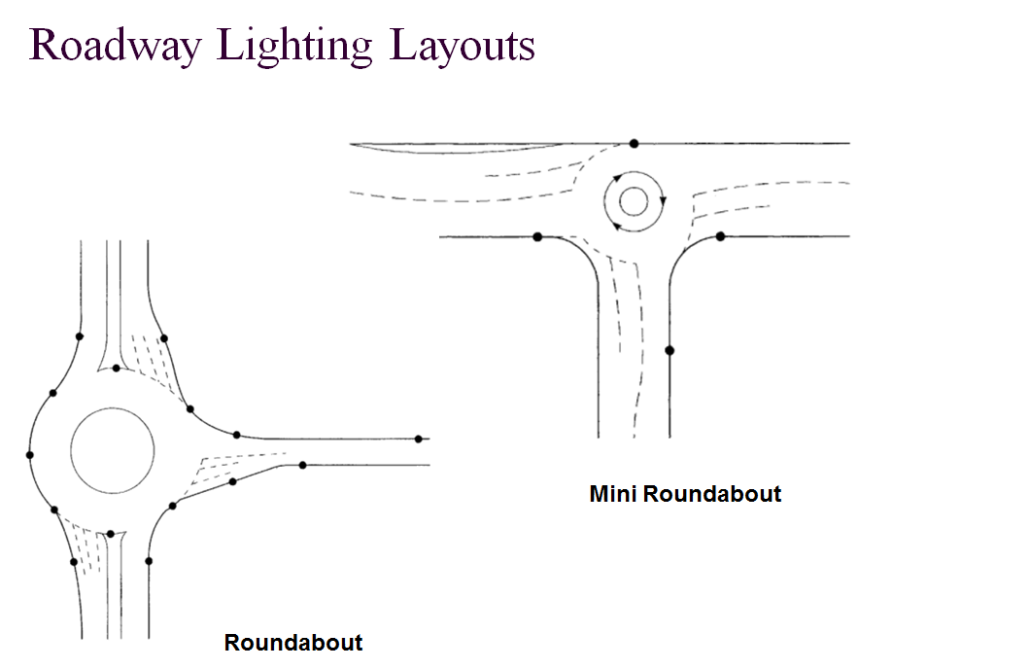- FORUM
- PROJECTS
- ABOUT US
- RESOURCES
- CONTACT US
- FORUM
- PROJECTS
- ABOUT US
- RESOURCES
- CONTACT US
For two lane roads, pedestrian-scale lighting may provide the required level of illumination for the street and sidewalk. However, if this does not produce the required results or if the roads are wider (4 or more lanes), pedestrian-scale lighting will typically have to be supplemented with taller overhead lighting poles.

Typical Roadway lighting layouts taken from
FHWA Lighting Handbook
The main purpose of the overhead lighting is get the luminaries on mast arms extended over the road beyond to tree canopies to light the street. The pedestrian-scale lighting will provide illumination for the sidewalk.
Roadway lighting layouts are designed to ensure that roads are adequately illuminated for safe driving at night. The layout will depend on various factors, such as the road width, speed limit, and traffic volume. Here are some common roadway lighting layouts:
- Cross-Sectional Layout: This layout is used to determine the spacing and height of the poles along the roadway. It takes into account the width of the road, the number of lanes, and the height of the surrounding buildings.
- Longitudinal Layout: This layout is used to determine the number of poles required along the length of the roadway. It considers the spacing between the poles, the curvature of the road, and the speed limit.
- Uniform Spacing Layout: This layout involves placing the poles at equal distances apart along the roadway. It is often used on roads with low traffic volumes and low speeds.
- Group Spacing Layout: This layout involves clustering poles together in areas where higher levels of illumination are required, such as intersections, sharp turns, or pedestrian crossings.
- Combination Layout: This layout combines the uniform and group spacing layouts to provide adequate illumination for all areas of the roadway.
Roadway Lighting Layouts



When designing a roadway lighting layout, it’s essential to consider the safety and comfort of drivers, pedestrians, and other road users. Adequate lighting can significantly reduce accidents, increase visibility, and enhance the overall safety of the roadway.
Illumination in architecture – home page
FD Architect Community Forum Discussion
- Illumination – introduction
- Basic Terminology and Definitions
- Laws of Illumination The Inverse Square Law of Illuminance Illuminance (E) at any poi
- Laws of Reflection and Refraction
- Visual efficiency & comfort
- Day lighting
- Components of Daylight Factor
- Artificial Lighting Design
Download Study Notes PDF
Register as member and login to download attachment use this only for Educational Purpose
Disclaimer
Information on this site is purely for education purpose. The materials used and displayed on the Sites, including text, photographs, graphics, illustrations and artwork, video, music and sound, and names, logos, IS Codes, are copyright
1 Comment
[…] Roadway Lighting Layouts […]